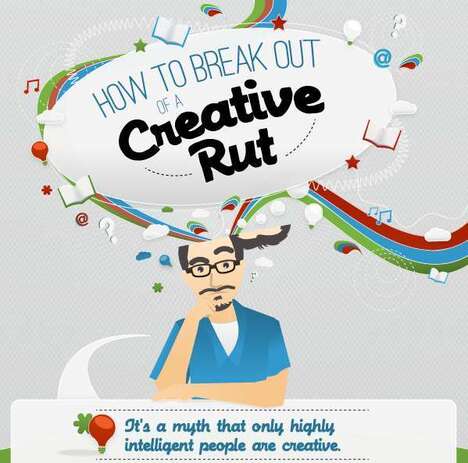How to Think Like an Innovator: 3 Creativity-Stimulating Behaviors
Related Trend Reports
Architecture, Art & Design, Babies, Business, Design, Interactive, Internet, Life, Lifestyle, Market, Modern, Pop Culture, Publicity Stunts, Social Media, Tech Whether you're a CEO, owner of a small business, a department manager or a marketer, your job will most likely require some degree of creativity in which you must think like an innovator. After all, it is innovative-thinking that has led the world's top companies to paramount success and in some cases, made those brands what they are today. So what does it take to think like an innovator? Here are three habits of highly innovative people:
Whether you're a CEO, owner of a small business, a department manager or a marketer, your job will most likely require some degree of creativity in which you must think like an innovator. After all, it is innovative-thinking that has led the world's top companies to paramount success and in some cases, made those brands what they are today. So what does it take to think like an innovator? Here are three habits of highly innovative people:1) Look for Links. One of the top qualities of a successful innovator is the ability to associate seemingly disparate ideas and come up with solutions and ideas that link the two together. Many of the world's most prominent inventions and developments have come from innovators who have been able to supplant one idea into the context of another. For example, Ruth Handler came up with the idea for the Barbie doll when she noticed that her daughter liked pretending her dolls were adults; later, Handler went on a trip to Europe and discovered the German-made Bild Lilli doll, which inspired the look of Barbie.
2) Widen Your Social Circle. It's human nature to surround yourself with people who are like you, people who might have similar jobs, hobbies, lifestyles, etc. However, when you spend a lot of time with people of similar interests and backgrounds, you aren't exposed to new ideas and ways of thinking as you would be if you were to extend your social circle to include people from different backgrounds and cultures with whom you might not be so comfortable. While they might not become your new best friends, they can open up your eyes to new possibilities and concepts and help you see things from a different perspective. This idea has led some managers to impose interaction in the workplace; for example, Steve Jobs forced his Pixar employees to interact by building restrooms in the center of the building, making people trek from different corners of the office to use the bathroom and converse with people with whom they might not have met otherwise.
3) Question Everything. Innovators are naturally curious -- they want to understand everything and in attempting to do so, they come up with more imaginative ideas and concepts. Think like an innovator by asking more questions as they relate to your current work, practices, products -- whatever could be improved. You can also apply this to day-to-day situations, for example, when you're frustrated about the functionality of a particular product. Take a step back and take a critical look at the current situation, and ask yourself "What if" and "Why not" questions to see if you can push the boundaries of convention.
Find out more about innovative concepts and brands by visiting Trend Hunter's PRO trends database, which includes trends like Stimulating Creativity and Imposed Interaction. Also uncover more developments in innovative thinking and work environments by downloading Trend Hunter's Business Trend Report and Marketing Trend Report.
References: trendhunter, trendreports
Featured Articles

Imposed Interaction
Designers create workspaces that force collaboration and idea-sharing

Stimulating Creativity
Innovations encouraging us to unleash our imagination

Curious Contest
Brands create bizarre competitions to engage more customers

Creative Engagement
Brands use creativity-based contests to enhance consumer interaction

Crowdsourcing Creativity
Cultivating Cost-Effectice Consumer Involvement

Kid Creation
Stimulating creativity in children through DIY-focused innovations